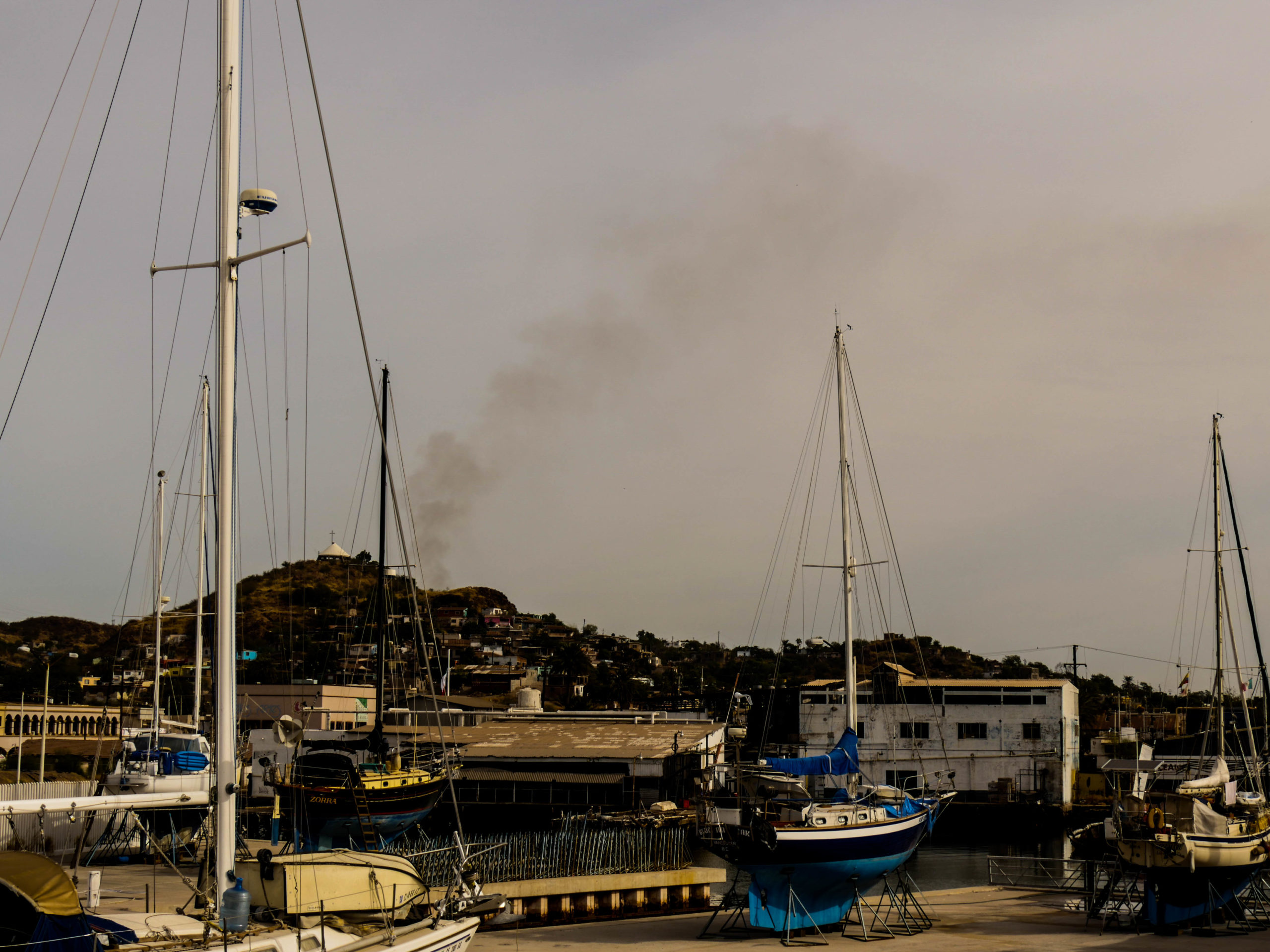Guaymas, Mexico, is an industrial and shrimp-fishing port in the desert state of Sonora. Giant cargo ships nose past steep, uninhabited islands in the bay crowded with saguaro cacti.
Every morning for the past month I have lived here, Guaymas has held two certainties: the shriek of an Osprey that patrols the harbor waters, and a brown cloud lacing its way through the desert hills to the marina. Industry meets nature in close quarters here. The Osprey, or sea hawk, takes advantage of city living, using light poles in the marina to perch and spot fish. The haze is also part of city life; it comes from an electricity generation plant that burns oil over one of the poorest neighborhoods in town. I watched this brown air extend out into the coastal city every morning while 195 nations debated what could be done about our warming planet at the 21st annual Conference of Parties (COP) in Paris. Paris is over 5,000 miles from Guaymas, and under the burning oil haze, the negotiations felt far indeed.
So when most of the world’s countries agreed, in a landmark deal, to aim to keep the global warming below 1.5 degrees C (2.5 degree F,) I felt both skeptical and hopeful. One of the main problems with the deal is that the actual national commitments do not add up to the goal of keeping warming below 1.5 degrees C. They add up to 3.5 degrees C (6.3 degree F)—which means a much higher risk of all the Antarctic and Greenland ice sheets melting into the sea. (Swamping Guaymas, incidentally.) However, getting 195 of anything, nevermind countries, to agree on something is flabbergasting and speaks volumes to clever orchestration of the event as well as the growing urgency of the climate threat. After 21 years of failed COPs, why did it work this time?
Paris was more than an agreement generated over two weeks. It began years ago—and a change in Guaymas hints at how. In 2014, Mexico committed 2.8 billion USD to a new electric generating station here that will burn natural gas. The plant takes advantage of the proximity to the US border, building a natural gas pipeline to import the cleaner, cheaper fuel flooding the US market. This is good news for both Guaymas and Paris, since natural gas releases about two thirds the amount of carbon as oil, and fewer cancer-causing particles into the air around the city. It’s not a perfect solution, much like the Paris agreement—but it’s movement that reflects a national commitment to an international issue.
Mexico had already made a bold goal to cut emissions as well. In 2012, the federal government enacted a law requiring 35% renewable energy generation by 2025. Natural gas won’t meet this goal—but Sonora has desert sun that could drive the development of the 6 Gigawatts of solar needed to meet this target. So far, there are 176 Megawatts of solar installed in the state (one gigawatt is 1,000 megawatts—which means .03% is completed.) Many are skeptical that the country could achieve a buildout that quickly. But it’s a start.
Mexico was not alone in reaching for cleaner fuel. In 2014, breakthroughs like this occurred with the world’s biggest up-and-coming polluters. China agreed to cut emissions by 2030 and initiated a huge solar and wind buildout. India fell in step by committing to 100 Gigawatts of solar by 2022. As Dan Lashof at the National Resource Defense Council put it, these commitments don’t keep the globe to 1.5 degrees C of warming, but “they end the reckless global game of chicken that has characterized climate negotiations until now.”
In addition to these national commitments, Paris saw an awesome outpouring of ‘locals.’ Governors and mayors showed up by the thousands, with commitments to cut emissions far deeper than their national agreements. California and the German state Badden-Wuttenberg created an agreement called the Under 2 MoU, which was signed by 80 jurisdictions with a combined worth of more than the GDP of the United States. They agreed to cut emissions by 80 percent or to 2 tons by 2030. These states are ahead of national policy as the ‘early adopters,’ showing the rest of the world that it’s possible to achieve drastic emissions cuts in minimal time.
Finally, the developed nations of the world agreed to help fund not only the technology needed to replace coal and oil, but also the damages caused by the flooding, droughts, and sea level rise of climate change. Many island nations were disappointed that no number was specified—yet liability was recognized for the first time, even if the accord doesn’t use that “L” word. While the conference was first about mitigation—reducing the carbon going into the atmosphere—it also included much needed recognition of adaptation funding for the countries already experiencing the impacts of climate change.
A week has passed since the negotiators, youth activists, governors and country delegates went home from Paris. This morning, the Osprey still circled the harbor in Guaymas, repeating its shrill cries, and the thin brown cloud leaked over the hill and into the port city. Clouds gave way to a hazy sky, and life proceeded under the desert sun.

